CESB 2024
8th CHINA-EUROPE SYMPOSIUM ON BIOMATERIALS IN REGENERATIVE MEDICINE
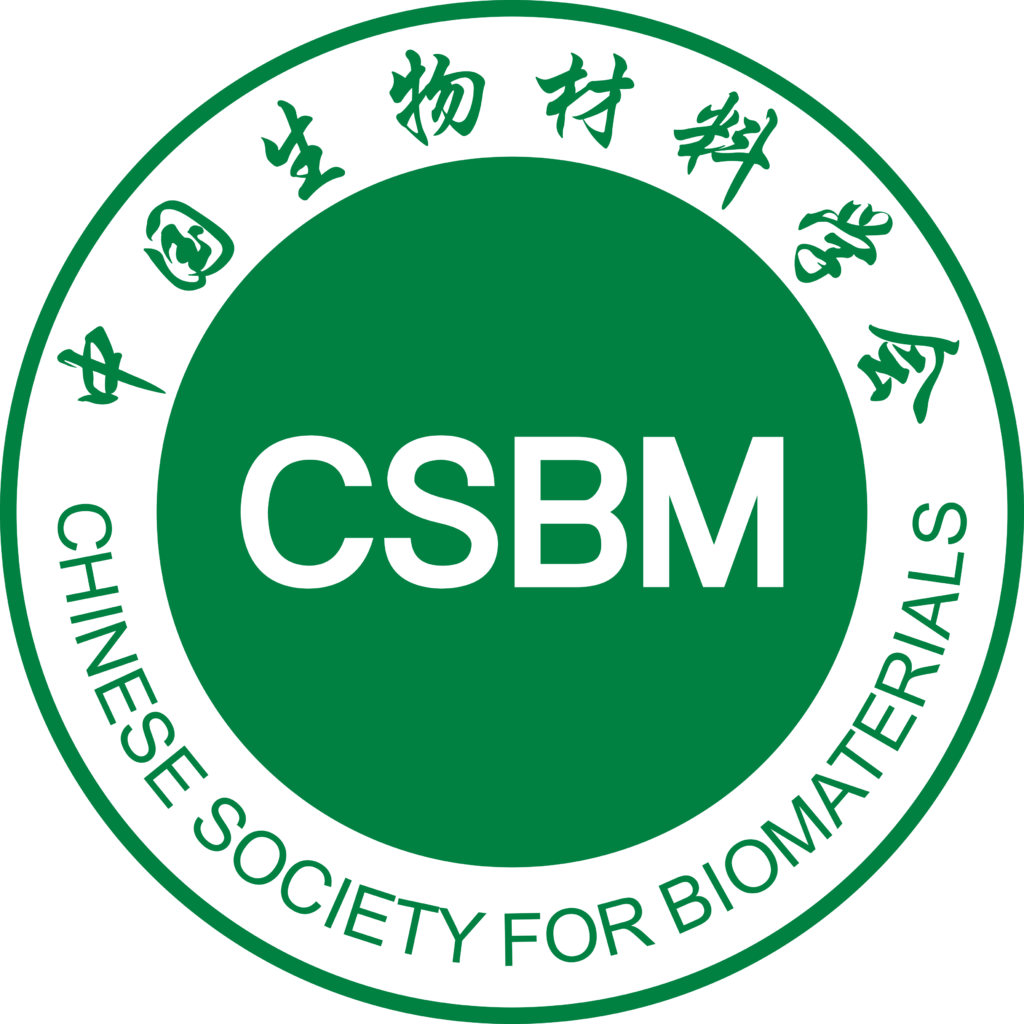
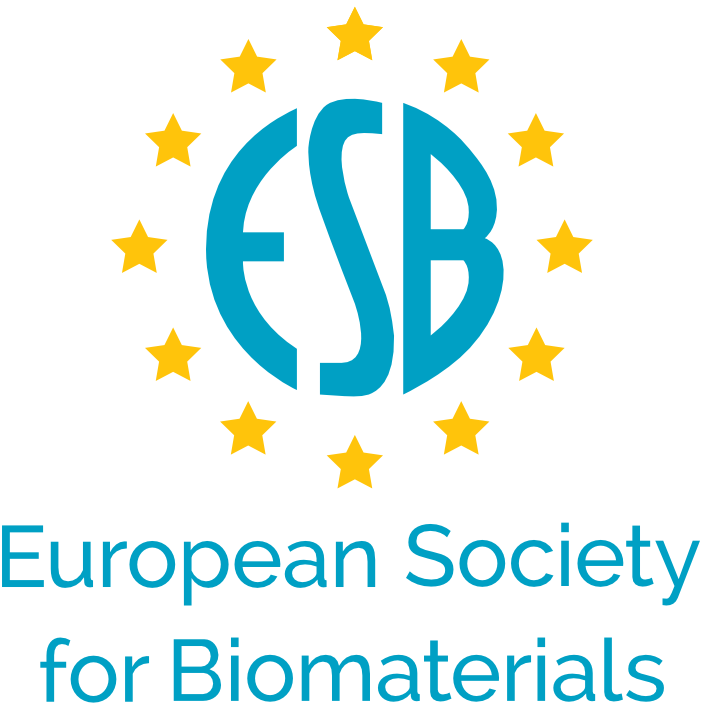
15. – 18.09.2024, NUREMBERG (GERMANY)


CESB 2024
8th CHINA-EUROPE SYMPOSIUM ON BIOMATERIALS IN REGENERATIVE MEDICINE


15. – 18.09.2024, NUREMBERG (GERMANY)



Chunying Chen
National Center for Nanoscience and Technology of China, PR China
Presentation title:
Nano-Bio Interfaces and Strategies for Nanomedicine
Nano-Bio Interfaces and Strategies for Nanomedicine
Chunying Chen*
National Center for Nanoscience and Technology of China
*Email: chenchy@nanoctr.cn
Nanomaterials have enormous potential as nanomedicines for diagnosing and fighting various diseases. Researchers make every endeavor to design diverse nanomedicines with novel nanostructures and smart payloads. An inconvenient hurdle in the practice of nanomedicine is the protein corona, a spontaneous collection of biomolecular species by nanoparticles in living systems. The protein corona has shown the important roles in shaping up the transformation and transport of nanoparticles as well as in eliciting their functional (biophysical, biochemical, and biological) and adverse (immunological, toxicological, and pathogenic) effects in vitro and in vivo. The dynamics of intracellular release or exchange of the blood protein corona from nanomaterials following their cellular internalization are also discussed. The fate of nanoparticles and their biodistribution and cell internalization are regulated by the protein corona. Accordingly, manipulation of the protein corona has been a common strategy for the design and delivery of nanomedicines. This talk will discuss the chemical and biophysical signatures of the protein corona and ponders challenges ahead for the field of nanomedicine.

Changsheng Liu
President, Shanghai University, Academician of Chinese Academy of Sciences, PR China
Presentation title:
Decoding biomaterial-mediated regeneration: from the perspective of materiobiology
Decoding biomaterial-mediated regeneration: from the perspective of materiobiology
Changsheng Liu
Frontiers Science Center for Materiobiology and Dynamic Chemistry, Engineering Research Center for Biomedical Materials of the Ministry of Education, Shanghai University, Shanghai 200444, PR China
East China University of Science and Technology, Shanghai 200237, PR China
The repair and reconstruction of defected tissue is a difficult problem that modern medicine tries to resolve. Especially, in the age of aging, the repair and regeneration of tissues become more difficult because of the diminished regenerative capacity. Biomaterial-based treatments are one of the important strategies for tissue regeneration. After implantation, biomaterials can not only provide a structural framework to support, but also facilitate the attachment and migration of host stem and progenitor cells, and drive the differentiation of these cells into tissue-specific cell types. Although the biological effects of materials are gradually being discovered, the mechanisms of how to direct endogenous progenitor or stem cells to the site of an injury and aid the healing of damaged tissues are still unclear. In fact, there is a lack of systematic and detailed understanding of how implanted materials participate in the in vivo microenvironment. These blind spots directly restrict the design of regenerative materials, particularly for those impair homeostasis and dysfunction of stem or progenitor cells. Therefore, it is necessary to further decode the correlation between material properties and biological functions, and clarify the rules and relevant mechanisms of how materials precisely control over biophysical and biochemical cues to direct endogenous regeneration. Thus, from the view of materiobiology, we outline some biological effects of biomaterials to enhance the regenerative capacity of the body for tissue regeneration.
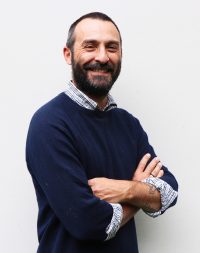
Christophe A. Marquette
Deputy Director of the Institut de Chimie et Biochimie Moléculaires et Supramoléculaires, Université Lyon, France
Presentation title:
Bioinspired hydrogels for 3D bioprinting and regenerative medicine
Christophe Marquette received the Doctorat de spécialité in Biochemistry (1999) from the Université Claude Bernard-Lyon 1. After a two years post-doctoral fellowship at the Concordia University (Canada, Qc), he integrated the Centre National de la Recherche Scientifique (CNRS) in 2001.
He is presently permanent Research Director and Deputy Director at the Institut de Chimie et Biochimie Moléculaires et Supramoléculaires (ICBMS, UMR5246, CNRS-Université Lyon1) and is in charge of the Biochips and Micro-arrays Group, dealing with biology/surface interaction and 3D printing of living cells. Since 1998, he is author or co-author of more than 160 articles (H index: 44), 15 book chapters, 25 patents and more than 200 communications.
He is also the founder the Nano-H, AXO Science, HealShape and 3Deus Dynamics Companies.
He is also the founder of the unique 3d.FAB platform, specialised in additive manufacturing technologies for Life Science (http://fabric-advanced-biology.univ-lyon1.fr/).
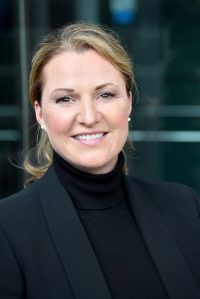
Katja Schenke-Layland
Institute of Biomedical Engineering, Department for Medical Technologies and Regenerative Medicine, Eberhard Karls University Tübingen, Tübingen, Germany
Natural and Medical Sciences Institute (NMI) at the University of Tübingen, Reutlingen, Germany
Presentation title:
Extracellular Matrix Proteins Nidogen-1 and Decorin Mitigate Ischemia and Restore Functionality of Human Islets of Langerhans
Extracellular Matrix Proteins Nidogen-1 and Decorin Mitigate Ischemia and Restore Functionality of Human Islets of Langerhans
Abiramy Jeyagaran1§, Max Urbanczyk1§, Shannon L. Layland1, Katja Schenke-Layland1,2
1 Institute of Biomedical Engineering, Department for Medical Technologies and Regenerative Medicine, Eberhard Karls University Tübingen, 72076 Tübingen, Germany
2 Natural and Medical Sciences Institute (NMI) at the University of Tübingen, Reutlingen, Germany
§ Authors contributed equally.
Abstract
Transplantation of donor islets of Langerhans is a potential therapeutic approach for patients with diabetes mellitus; however, its’ success is limited by islet death and dysfunction during the initial hypoxic conditions at the transplantation site,[1] emphasizing the importance of supporting the donor islets in the days post-transplantation until the site is vascularized. We previously demonstrated that the extracellular matrix (ECM) proteins nidogen-1 (NID1)[2] and decorin (DCN)[3] improved the functionality and survival of the β-cell line, EndoC-βH3, and the viability of human islets post-isolation.[4] To advance the use of these ECM proteins in a clinical application, we assessed the effects of ECM proteins NID1 and DCN on isolated human donor islets cultured in normoxic and hypoxic conditions. Interestingly, NID1- and DCN-treatment restored β-cells functionality of human donor islets in a hypoxic environment. Furthermore, TUNEL staining for DNA fragmentation as a marker of cell apoptosis showed that in the hypoxic cultures, NID1 or DCN-treatment significantly reduced DNA fragmentation compared to the control islets. Our results demonstrate that the co-transplantation of these ECM proteins with islets of Langerhans may have the potential to overcome the hypoxia-induced cell death observed post-transplantation and improve transplant outcomes.
References
[1] H. Komatsu, F. Kandeel, Y. Mullen, Pancreas 2018, 47, 533.
[2] A. Zbinden, S. L. Layland, M. Urbanczyk, D. A. C. Berrio, J. Marzi, M. Zauner, A. Hammerschmidt, E. M. Brauchle, K. Sudrow, S. Fink, et al., 2020, 2002500, 1.
[3] M. Urbanczyk, A. Jeyagaran, A. Zbinden, C. en Lu, J. Marzi, L. Kuhlburger, S. Nahnsen, S. L. Layland, G. Duffy, K. Schenke-Layland, Matrix Biol. 2023, 115, 160.
[4] D. Brandhorst, H. Brandhorst, S. L. Layland, S. Acreman, K. Schenke-Layland, P. R. V Johnson, Acta Biomater 2022, 137, 92.
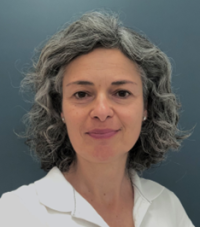
Maria Chatzinikolaidou
Associate Professor of Biomaterials in Bioengineering and Head of the Laboratory for Biomaterials in Tissue Engineering at the Department of Materials Science and Technology at the University of Crete, Greece
Presentation title:
Bioprinted vascularized bone grafts using responsive biomaterials and dynamic cultures
Dr. Maria Chatzinikolaidou, FBSE, FTERM, is an Associate Professor of Biomaterials in Bioengineering and Head of the Laboratory for Biomaterials in Tissue Engineering at the Department of Materials Science and Technology at the University of Crete (https://www.materials.uoc.gr/en/faculty/maria-chatzinikolaidou/), and affiliated faculty member at Foundation for Research and Technology – Hellas (FORTH). Her research interests focus on the development of biomaterials and scaffolds for tissue engineering applications including bone, dental, cardiovascular, and the validation of their in vitro and in vivo biocompatibility, functionality and biomechanical characteristics.
Dr. Chatzinikolaidou served as vice president of the executive board of the Hellenic Society for Biomaterials in the terms 2015-2018 and 2022-2025. She served as chair of the 28th Conference of the European Society for Biomaterials (ESB 2017) held in Athens, and program chair of the TERMIS-EU 2019 conference held in Rhodes in Greece. She is a Fellow in Biomaterials Science and Engineering (FBSE, elected 2020) of the International Union of Societies for Biomaterials Science and Engineering (IUS-BSE) and International Fellow of Tissue Engineering and Regenerative Medicine (FTERM, elected 2023). In 2023 she has been elected European Orthopaedic Research Society (EORS) ambassador for Greece.
Bioprinted vascularized bone grafts using responsive biomaterials and dynamic cultures
Maria Chatzinikolaidou 1,2
1 Department of Materials Science and Engineering, University of Crete, 70013 Heraklion, Greece
2 Foundation for Research and Technology Hellas-Institute of Electronic Structure and Laser (FORTH-IESL), 70013 Heraklion, Greece
Email: mchatzin@materials.uoc.gr
Key Words: Co-culture, osteogenesis, angiogenesis, dynamic cultures
3D bioprinting is a versatile technology that uses bioinks comprising biomaterials and biomolecules with encapsulated living cells to print three-dimensional (3D) structures with precise spatial hierarchy and controlled cell distribution within the biomaterial matrix. Bone is a highly complex tissue and the fabrication of vascularized bone grafts to regenerate large bone defects is a challenge. The aim of this study is the design and biofabrication of novel 3D bioprinted constructs comprising natural and synthetic biomaterials aiming to produce elastic bioinks that support tissue growth and osteogenic and angiogenic differentiation.
To this end, we fabricated various hydrogel bioinks their respective composites with inorganic compounds such as nano-hydroxyapatite (nHA) or laponite. The effects of the various bioink compositions on their mechanical properties and their potential to support osteogenesis and angiogenesis towards the fabrication of vascularized bone grafts have been examined. The physicochemical and mechanical properties of the produced constructs have been assessed. The osteogenic and angiogenic responses of human regeneration competent mesenchymal stem cells in mono and co-cultures have been validated in static and dynamic cultures using a bioreactor applying uniaxial compression. Specific functional markers for the extracellular matrix, the osteogenic and angiogenic responses have been determined by visualization using confocal microscopy, or by quantification using biochemical assays and gene expression analysis.
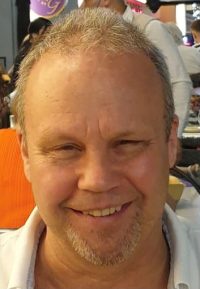
Dirk W. Grijpma
University of Twente, The Netherlands
Presentation title:
Synthesis and properties of biodegradable hybrid networks based on natural and synthetic polymers
Prof. Dirk Grijpma’s research interests are: resorbable polymers for medical applications, structure-properties relationships in polymers, tissue engineering, bioreactor technology, drug delivery, ring opening polymerization, photo-polymerization, 3D-printing and stereolithography. He is highly interested in translation of his research to clinical application.
His work includes the synthesis and characterization of large arrays of materials in a combinatorial manner and their evaluation by high throughput methods, which have led to the discovery of novel hydrogel materials that performed unexpectedly well in their interaction with cells. The development of hybrid biomaterials based on (incompatible) natural and synthetic polymers yields exciting new materials that combine the beneficial properties of both.
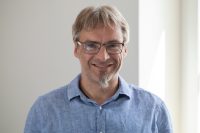
Jürgen Groll
Department for Functional Materials in Medicine and Dentistry, University of Würzburg, Germany
Presentation title:
The collaborative research center SFB/TRR 225 biofabrication – a general overview and specific research examples
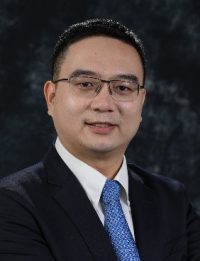
Zhen Gu
Distinguished Chair Professor and Dean, College of Pharmaceutical Sciences, Zhejiang University, PR China
Presentation title:
Bioinspired delivery of biomacromolecules and cells
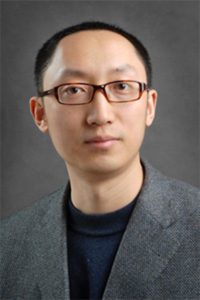
Hua Ai
National Engineering Research Center for Biomaterials, Sichuan University, Chengdu, PR China
Presentation title (tentative):
Magnetic resonance imaging nanoprobes
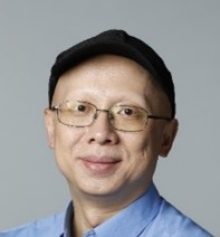
Xingyu Jiang
Department of Biomedical Engineering, Southern University of Science and Technology, Shenzhen, PR China
Presentation title:
Stretchable bio-electronics for regenerative medicine
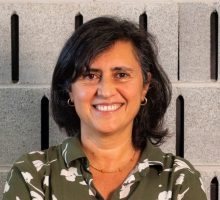
Cristina Martins
BioEngineered Surfaces Group Leader
INEB – Instituto de Engenharia Biomedica
i3S- Instituto de Investigação e Inovação em Saúde, Universidade do Porto, Porto, Portugal
Presentation title:
Bioengineered biomaterial coatings based on antimicrobial peptides to fight bacterial infections
Cristina Martins (Martins, MCL) is an expert in the development of biomaterial coatings designed at the nanoscale using self-assembled monolayers (SAMs) and biomedical polymers. She is Principal Investigator at INEB/ i3S (Instituto Engenharia Biomédica/Instituto de Investigação e Inovação em Saúde; www.i3s.up.pt) and Invited Assistant Professor at the University of Porto, Portugal (ICBAS – Instituto de Ciências Biomédicas Abel Salazar). Cristina Martins is the leader of the research group: BioEngineered Surfaces. Her group is investigating the effect of surface immobilized ligands (proteins/peptides, fatty acid like and glycosylated compounds) in the guiding of specific protein/cell binding to control bacterial infection (e.g., in gastric and skin infection or osteomyelitis prevention) and/or medical devices associated thrombus formation.
Scopus Author ID: 7402262354;
https://orcid.org/0000-0002-6574-4794;
https://scholar.google.pt/citations?user=zTnuO7YAAAAJ&hl=en
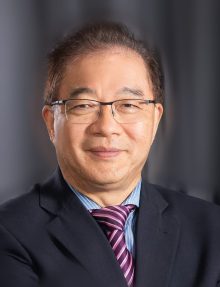
Ling Qin
Choh-Ming Li Professor of Orthopaedics & Traumatology, Cologne, Germany
Director of Innovative Orthopaedic Biomaterials and Drug Translational Research Laboratory of Li Ka Shing Institute of Health Sciences, Faculty of Medicine
Director of Centre of Musculoskeletal Degeneration and Regeneration/Director of Musculoskeletal Research Laboratory, Department of Orthopaedics & Traumatology
The Chinese University of Hong Kong, Hong Kong SAR, PR China
Presentation title:
Magnesium as an exogenous growth factor in regulation of skeletal regeneration via upregulation of endogenous growth factors
Professor Ling QIN is Choh-Ming Li Professor of Orthopaediatrics and Traumatology and Director of CUHK SZ-HK Innovation Technology Institute (Futian) and Musculoskeletal Research Laboratory of the Department of Orthopaedics & Traumatology. Professor Qin has been working on basic and translation research in orthopaedics with focus on diagnosis and pathophysiology of bone metabolic disorders and their treatment using innovative biometals as Class III medical implants over the past 30 years. Professor Qin is editor-in-chief of Journal of Orthopaedic Translation and past president of International Chinese Musculoskeletal Research Society (ICMRS). As principle investigator, Dr. Qin has received over 36 competitive research grants (including AoE, TRS, CRF, GRF, ITF, HMRF, NSFC-RGC from Hong Kong, and EU-NSFC, 12.5 and 13.5 Key R&D projects of the MOST from Mainland). Professor Qin published 9 books and over 460 SCI journal papers with a H-index of 76. He also holds over 30 inventions or new utility patents from PRC and USA. His pioneer scientific and translational research work in developing innovative biodegradable Mg-based metals for orthopaedic applications has been highlighted in Nature and Science.
Professor QIN received many prestigious honors and awards, including Member of Academy of Europe (MAE) and Fellow of AIMBE, ICORS, ASBMR, and IUSBSE attributed to his contribution to musculoskeletal research and innovation of biomaterials for orthopaedic applications.

Laura Russo
University of Milano-Bicocca, School of Medicine and Surgery, Vedano al Lambro, Italy
Presentation title:
The importance of Glycosignature in ECM tissue models
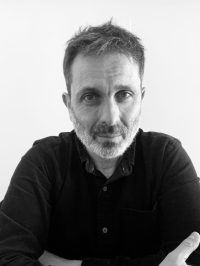
Manuel Salmeron-Sanchez
James Watt School of Engineering
Centre for the Cellular Microenvironment
Advanced Research Centre, Glasgow
University of Glasgow, UK
Presentation title:
Engineered viscoelasticity in stem cell microenvironments
Manuel Salmeron-Sanchez is Professor of Biomedical Engineering at the University of Glasgow Glasgow and ICREA Research Professor at Institut de Bioenginyeria de Catalunya (IBEC). Manuel develops advanced biomaterials for cell and tissue engineering, to underpin in vitro models and as tools for mechanobiology. His group engineers materials to provide control of the local cellular microenvironment, both biochemically and biophysically, including materials that trigger the organisation of extracellular matrix proteins in a physiological way (Science Advances 2016); the use viscosity to control cell behaviour (PNAS 2018); living biomaterials (bacteria-based materials) for stem cell engineering (Advanced Materials 2018); the low dose use of BMP-2 for bone regeneration (Advanced Science 2019) and interfaces that trigger the mechanical activation of growth factors (Advanced Materials 2024). Manuel holds an ERC AdG to develop the next generation of viscoelastic materials to understand this important property of the extracellular matrix in the context of tissue regeneration. Manuel was Professor of Applied Physics in Valencia until his relocation to Glasgow in 2013 as Chair of Biomedical Engineering. He is a Fellow of the Royal Society of Edinburgh, Scotland’s National Academy for Arts and Sciences.
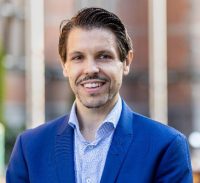
Hélder A. Santos
Head of the Department of Biomaterials and Biomedical Technology, University Medical Center Groningen, University of Groningen, The Netherlands
Head of the Translational Bionanomicro Theragenerative Medicine Lab, University Medical Center Groningen, University of Groningen, The Netherlands
Scientific Director of the Health Technology Research and Innovation Cluster
Director and Head of the Nanomedicine and Biomedical Engineering Lab, Faculty of Pharmacy, University of Helsinki, Finland
Presentation title:
Biomimetic Cloaked Nanobiomaterials for Controlled Drug Delivery and Tissue Repair and Regeneration
Prof. Santos (D.Sc. Tech., Chem. Eng.) is a Full Professor and Chair in Biomedical Engineering, and the Head of the Department of Biomaterials and Biomedical Technology, University Medical Center Groningen, University of Groningen. He is also Research Director at the University of Helsinki, Faculty of Pharmacy. Prof. Santos is also the co-founder of the startups Capsamedix Oy and Medixmicro Oy, and Coordinator of a large MSCA-ITN P4 FIT network in tendon repair. He holds Visiting Professorships at the Shanghai Jiao Tong University School of Medicine and University of Tartu, and he is also an Honorary Adjunct Fellow at the University of Technology Sydney. Prof. Santos research interests include the development of nanoparticles/nanomedicines and biomaterials for biomedical applications, particularly cancer and heart diseases. His lab makes the unique bridge between medical engineering, pharmaceutical nanotechnology, and tissue engineering by combining unique techniques to develop novel therapeutic formulations for translation into the clinic. He is co-author of more than 550 publications (+24000 citations; h-index = 91) and 6 patents. He has +250 invited talks around the world. He is also in Editorial board member of Advanced Healthcare Materials, Advanced Therapeutics, Chemical Society Reviews, Journal of Controlled Release, VIEW, Journal of Functional Materials, Frontiers in Bioengineering and Biotechnology and Materials, Frontiers in Biomaterials, Precision Nanomedicine, among many others. He is Associate Editor of Nano Select, Smart Materials in Medicine, and Drug Delivery and Translational Research, among others. Prof. Santos has received prestigious honours, awards and grants, such as the “Talent Prize in Science” in 2010 attributed by the Portuguese Government, the European Research Council Starting Grant in 2013, the European Research Council Proof-of-Concept Grant in 2018, the Young Researcher Award in 2013 attributed by the University of Helsinki, the Academy of Finland Award for Social Impact in 2016, and the Controlled Release Society Young Investigator Award 2021.

Jian Yang
Research Center for Industries of the Future, Biomedical Engineering Program, School of Engineering, Westlake University, Hangzhou, Zhejiang, PR China
Presentation title:
Regenerative Citrate Biomaterials for Regenerative Engineering
Dr. Jian Yang is currently a Chair Professor in Biomaterials and Regenerative Engineering, the chair of Biomedical Engineering Program, and an Associate Vice President at the Westlake University (China). Prior to Westlake, he was a Professor of Biomedical Engineering and Dorothy Foehr Huck and J. Lloyd Huck Chair in Regenerative Engineering at the Pennsylvania State University (USA). Dr. Yang is known for his pioneering contribution on citrate chemistry and biology for the development and applications of citrate-based biomaterials. He was a recipient of NSF CAREER Award (2010), Outstanding Young Engineering Faculty Award at UTA (2011), PSEAS Outstanding Research Award at Penn State (2018), and BMES Wallace H. Coulter Award for Healthcare Innovation Award (2023). Dr. Yang is an elected Fellow of American Institute of Medical and Biological Engineering (AIMBE, 2016), the US National Academy of Inventors (NAI, 2018), the US Biomedical Engineering Society (BMES, 2020), the American Association for the Advancement of Science (AAAS, 2021), and the International Academy of Medical and Biological Engineering (IAMBE, 2023). Dr. Yang is the Co-Editor-in-Chief of “Bioactive Materials”, and an Associate Editor of “Science Advances”. Dr. Yang is a co-founder and the Past-President of Chinese Association for Biomaterials (CAB) and the recipient of 2023 CAB Distinguished Leadership and Service Award.

Shengmin Zhang
Advanced Biomaterials and Tissue Engineering Center, Huazhong University of Science and Technology, Wuhan, China
Institute of Regulatory Science for Medical Devices, Huazhong University of Science and Technology, Wuhan, China
NMPA Research Base of Regulatory Science for Medical Devices,Huazhong University of Science and Technology, Wuhan, China
Presentation title:
New Strategy for Regenerative Medicine Based on Bioenergetic-active Materials
Professor Shengmin Zhang, Ph.D. is a world-wide leading scientist in innovative biomaterials, regenerative medicine and medical devices. Currently, He is the Dean of Institute of Regulatory Science for Medical Devices, Huazhong University of Science and Technology, Director of Research Base of Regulatory Science for Medical Devices, National Medical Products Administration, The People’s Republic of China. In addition, he is also the Chair of TERMIS-AP and the Vice President of Chinese Society for Biomaterials.
Dr. Zhang is the author/co-author of more than 120 peer review journal papers, such as National Science Review, Science Advances, Chemical Reviews, Materials Today, Nature Communications, ACS Nano, Biotechnology Advances, Biomaterials,Advanced Functional Materials, etc. Professor Zhang is the pioneer of the clinical translation of functional element-doped bone grafts and bioactive composite absorbable bone internal fixation devices found in clinic applications for more than 15 years. Up to now, his patents have been successfully translated into 7 medical devices in markets approved by CFDA/NMPA and FDA.
As the Vice President of Chinese Society for Biomaterials, Chief Expert on Science Promotion of the Association of Science and Technology of China, Dr. Zhang also contributed a lot to public policy consulting, industrial development, and public promotion of biomaterials science and engineering. He is one of few leading scientists in promoting multi-lateral international cooperation among government departments, societies, institutions, such as CFDA, FDA, KFDA, societies for biomaterials and TERM, etc.

Yufeng Zheng
School of Materials Science and Engineering, Peking University, Beijing, PR China
Presentation title:
Development of High Strength Biodegradable Metals for Regenerative